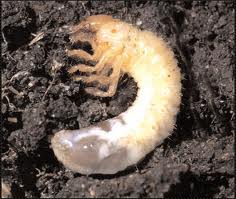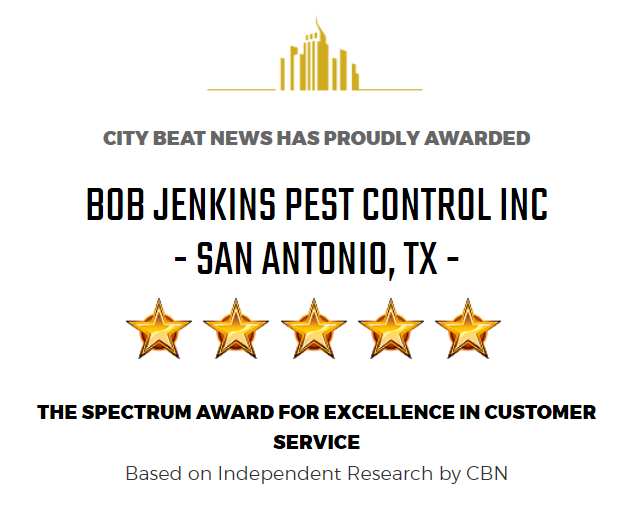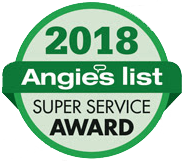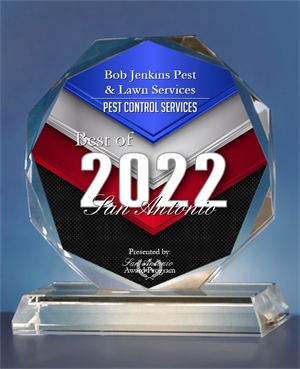Lawn Related Pest Control
Grub Worms
 To a gardening enthusiast, the lawn or garden is a very important part of their home. Here in San Antonio, there is one thing that always try to get in the way of that perfect yard or garden – the Grub Worm!
To a gardening enthusiast, the lawn or garden is a very important part of their home. Here in San Antonio, there is one thing that always try to get in the way of that perfect yard or garden – the Grub Worm!
The grub worm is not exactly a worm. It’s a beetle larvae. Unlike earthworms that fertilize your soil, grub worms ruin them by munching on the roots of your plants, flowers, and grass. A healthy lawn can handle a few grub worms in the soil and will do little or almost no apparent damage, but if there are more than 15 to 20 grub worms per square foot in your lawn or garden, then there is a real problem and may require the services of a professional exterminator.
Brown Patch
 Brown patch can grow in all warm season turfgrasses but St. Augustine is more frequently damaged than the others.
Brown patch can grow in all warm season turfgrasses but St. Augustine is more frequently damaged than the others.
The fungus develops in high humidity, when day time temperatures are between 75 to 90 degrees F. and nighttime temperatures drop to 70 degrees F. or below. These conditions occur in the spring and fall but because the fungii stop growing when the air temperature is 90 degrees F. and above, the symptoms are more obvious in the fall.
The first symptom appears as a small, circular, water soaked dark grass that soon wilts and turns yellow or brown. As the fungus grows outward from the center, there is a grayish-black colored ring of wilted grass around the perimeter that is called a smokey ring. The patch begins small, a few inches in diameter and can grow to over fifty feet in diameter. As they expand and merge with other patches the shapes become irregular.
Another symptom is the leaves of the grass are easily pulled from the stolons. This is because the fungus has destroyed the tissue at the base of the leaf. The stolons are not usually killed unless the infection is severe and the warm, humid weather continues. If this is the case the roots and crowns will rot and the grass dies. If the stolons are not killed, the grass in the center of the patch may recover in a few weeks and put out new growth.
Brown Patch can be controlled by applying a fungicide. There are many on the market to chose from. Generally, the fungicide should be applied at the first sign of infection in the fall. Subsequent applications can be made according to the manufacturer while the day time temperatures continue to be warm and humid. The grass should be kept as dry as possible to slow the spread of the fungus. It should be watered as little as possible and only in the early morning.
Homeowners can reduce their chances of the fungus returning by following a balanced program of watering and fertilizing. Lawns with high nitrogen and high moisture are more likely to develop Brown Patch than a less cared for lawn. Watering should be done only when the grass needs it, in the early morning and to a soil depth of six inches, if possible. Avoid leaving grass clippings on the lawn when the fungus is active. Avoid over fertilizing with high nitrogen fertilizers. Preventative fungicides can be applied during the period the fungus is active.
All lawns are susceptible to Brown Patch, but a strong healthy lawn is more likely to recover quickly.
GREY LEAF SPOT
 One of the common problems we encounter in early summer on St. Augustine grass is a leaf spot disease called Gray Leaf Spot. Gray leaf spot develops rapidly with abundant moisture and warm temperatures on St. Augustine grass. It is especially troublesome in shaded areas that remain damp for prolonged periods of time, or in low-lying spots, or where water runoff flows regularly. Under these conditions, the disease can cause serious thinning of the turf.
One of the common problems we encounter in early summer on St. Augustine grass is a leaf spot disease called Gray Leaf Spot. Gray leaf spot develops rapidly with abundant moisture and warm temperatures on St. Augustine grass. It is especially troublesome in shaded areas that remain damp for prolonged periods of time, or in low-lying spots, or where water runoff flows regularly. Under these conditions, the disease can cause serious thinning of the turf.
Grey Leaf Spot first appears as tiny, brown leaf and stem lesions, which enlarge rapidly into round to oblong spots. The largest spots may extend nearly across the entire leaf and become a bluish-grey in colour. Mature lesions are tan to grey with purple to brown borders. A halo or general chlorosis may occur around or near spots. The spots may be covered with a grey mycelium during periods of warm, humid weather. If disease is severe, the entire planting may appear scorched as if it were suffering from severe drought.
FIRE ANTS
 The most popular question asked about Fire Ants is, “How do I get rid of these Fire Ants?” Fire Ants have proved very adaptable to the climate and though many attempts have been made to completely irradiate them, Fire Ants have proven they are not going away. Bob Jenkins Pest and Lawn Services can help you control Fire Ants in your yard.
The most popular question asked about Fire Ants is, “How do I get rid of these Fire Ants?” Fire Ants have proved very adaptable to the climate and though many attempts have been made to completely irradiate them, Fire Ants have proven they are not going away. Bob Jenkins Pest and Lawn Services can help you control Fire Ants in your yard.
Fire Ants totally lack free will and a sense of self. They are robots programmed to do a job, and they work like machines. They can lift objects ten times their own body weight. Fire ants are a variety of stinging ants with over 280 species worldwide.
If you accidentally step on a fire ant mound, they rush to the surface and attack in mass. First, they bite into your flesh to make themselves hard to remove and then they sting you, injecting a venom that will give you a very painful burning sensation.
CHINCH BUGS
 Chinch Bugs generally concentrate in a specific area and feed on plant sap. The symptoms will appear as yellow spots that rapidly turn into brown, dead areas. The bugs work out from the center of infestation, destroying grass as they advance. Chinch bugs infest lawns in the hot, dry weather of late summer, and are found in dry areas of the lawn.
Chinch Bugs generally concentrate in a specific area and feed on plant sap. The symptoms will appear as yellow spots that rapidly turn into brown, dead areas. The bugs work out from the center of infestation, destroying grass as they advance. Chinch bugs infest lawns in the hot, dry weather of late summer, and are found in dry areas of the lawn.ARMYWORM
 The Fall Armyworm (Spodoptera frugiperda) is part of the order of Lepidoptera and is the caterpillar life stage of a moth. It is regarded as a pest and can wreak havoc with crops if left to multiply. Its name is derived from its feeding habits. Armyworms will eat everything in an area and once the food supply is exhausted the entire “army” will move to the next available food source.
The Fall Armyworm (Spodoptera frugiperda) is part of the order of Lepidoptera and is the caterpillar life stage of a moth. It is regarded as a pest and can wreak havoc with crops if left to multiply. Its name is derived from its feeding habits. Armyworms will eat everything in an area and once the food supply is exhausted the entire “army” will move to the next available food source.APHIDS
 Aphids, also known as plant lice (and in Britain as greenflies), are small plant-eating insects, and members of the superfamily Aphidoidea. Aphids are among the most destructive insect pests on cultivated plants in temperate regions. The damage they do to plants has made them enemies of farmers and gardeners the world over, but from a purely zoological standpoint they are a very successful group of organisms.
Aphids, also known as plant lice (and in Britain as greenflies), are small plant-eating insects, and members of the superfamily Aphidoidea. Aphids are among the most destructive insect pests on cultivated plants in temperate regions. The damage they do to plants has made them enemies of farmers and gardeners the world over, but from a purely zoological standpoint they are a very successful group of organisms.SPIDER MITES
 Spider mites are members of the Acari (mite) family Tetranychidae, which includes about 1600 species. They generally live on the under sides of leaves of plants, where they may spin protective silk webs, and they can cause damage by puncturing the plant cells to feed. Spider mites are known to feed on several hundred species of plant.
Spider mites are members of the Acari (mite) family Tetranychidae, which includes about 1600 species. They generally live on the under sides of leaves of plants, where they may spin protective silk webs, and they can cause damage by puncturing the plant cells to feed. Spider mites are known to feed on several hundred species of plant.SCALE INSECTS
 The scale insects are small insects of the order Hemiptera, generally classified as the superfamily Coccoidea. There are about 8,000 species of scale insects.Most scale insects are parasites of plants, feeding on sap drawn directly from the plant’s vascular system. A few species feed on fungal mats and fungi, e.g., some species in the genus Newsteadia in the family Ortheziidae
The scale insects are small insects of the order Hemiptera, generally classified as the superfamily Coccoidea. There are about 8,000 species of scale insects.Most scale insects are parasites of plants, feeding on sap drawn directly from the plant’s vascular system. A few species feed on fungal mats and fungi, e.g., some species in the genus Newsteadia in the family Ortheziidae- Mosquito Control – Home Insect Repellent
- Scorpion Control in San Antonio
- Pest Control Services – Rodents
- Have Insects Been Buggin.. You
- Termite Inspections – Termite Treatment and Control
- Carpenter Ants and the Places They Hide
- Residential Pest Control – Indoors and Outdoors
- MOSQUITOES ARE A HAZARD TO YOUR PET’S HEALTH TOO
- Identification, Facts & Control of the House Fly
- Texas, San Antonio Termite Control
- How To Get Rid Of The June Bug
- Pest Control San Antonio – New Braunfels
- Rodent Control in San Antonio
- Methods of Termite Control
- Texas, San Antonio Termite Control
- New Braunfels Pest Control
- Maintenance Tips For Flea And Tick Season
- Helpful Tips On Flea Control and Prevention
- Termite Control And Treatment San Antonio
- Inspect Your Home For Termites This Spring
- Maintenance Tips For Flea And Tick Season
- Gardening Tips To Keep The Pests At Bay This Spring
- What Is Humane Animal Control?
- Stop The Pests: Room By Room Spring Cleaning Guide
- Summer Pest Control For Common Pests














